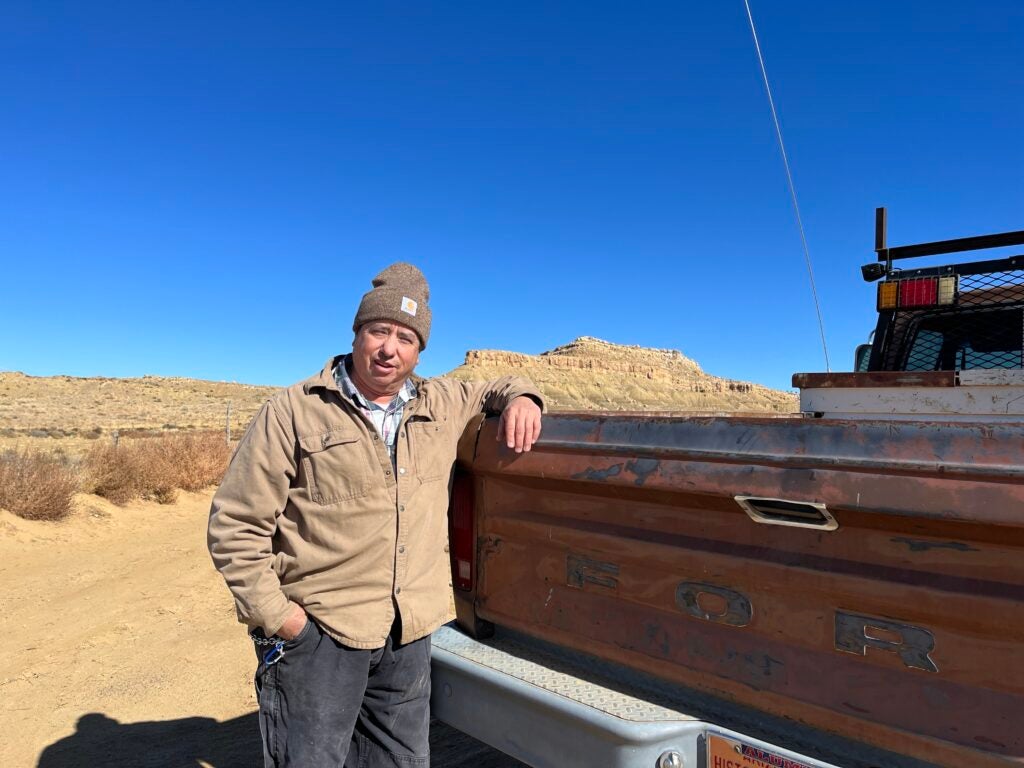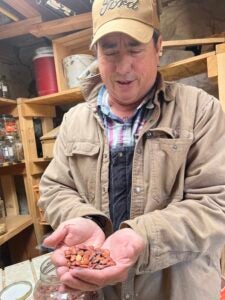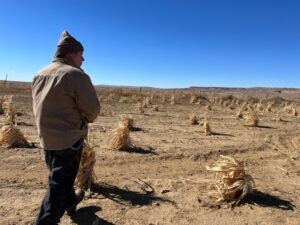As discussions at COP28 wrestle with climate impacts on global food and water security, we hear from a Hopi farmer on his thriving practice of dry farming and his hopes for shared learning in Dubai.
______
The arid climate of the Hopi reservation in northeastern Arizona receives a mere 8.5 inches of annual rainfall. For perspective, the yearly United States average is 30 inches. Despite this severe aridity, for over 3,000 years, the Hopi people have stewarded an extraordinary agricultural tradition centered on dry farming.
Dr. Michael Kotutwa Johnson is an Indigenous Resiliency Specialist at the University of Arizona and a leading practitioner of Hopi dry farming — a form of agriculture that eschews irrigation in regions with limited water moisture. As a 250th-generation Hopi dry farmer, his ongoing traditional practices are a testament to the power of cultural values and the potential of climate-adaptive farming. These ongoing Hopi farming practices defy modern notions of crop needs and vulnerability in areas with limited irrigation and water supply.
I had the opportunity to visit Dr. Johnson and his thriving farm on the eve of his trip to COP 28 — the UN Climate Conference in Dubai. In this interview, we dive into his insights on working with water-resilient crops and his hopes of finding shared solutions amongst other Indigenous communities facing the mounting impacts of climate change.
What is Indigenous Regenerative Agriculture?
Our crops, such as corn, are grown to fit the environment, not the environment manipulated to fit the corn.
How is water captured to raise resilient crops on Hopi?
We don’t use that much water at all. We rely upon the winter moisture as snowfall because it seeps through the ground. This year, the soil was soaked down about three feet, which is plenty to get us from planting in April until the end of July when we receive our first monsoon rain. We also grow in areas conducive to catching rain that naturally channels into our fields and in areas conducive to bringing new soil on alluvial floodplains. Our traditional techniques are all designed to conserve soil moisture. So, even the implements we invented here leave the soil moisture in a way vital to our survival.
Do you have insight into resilient solutions for other communities that are newly facing drier and more water-scarce conditions due to climate change?
My advice is to ask growers to determine what types of [native] crops are already grown in their area. Then diversify and capitalize on those crops, bring those crops back.
But we also need to look at the relational aspects of Indigenous people. What kind of relationship do they have with the environment? That’s one of the most important things, even with water. For our community, water is not a commodity; it’s viewed as a lifeway. It’s something we treasure – it should be handled that way. So, we need to look at our values deeper to find resilient climate solutions.
What do you hope others will take away from your insight at COP 28?
I want to show that Indigenous people are still here, and I hope they walk away looking at us as resilient people. For instance, Indigenous people account for 80% of global biodiversity. This fact is a huge reason we must be included in the worldwide conversation surrounding water and food systems. We can use our crops more powerfully by positioning Indigenous people in the discussion.
Indigenous is not just a word. It’s a lifeway. It’s something you practice rather than preach.
Follow Dr. Michael Kotutwa Johnson at COP 28, where he will join the EDF panel: Rising to the Challenge: Bridging Water and Food Ways of Knowing for Sustainable Food System Transformation on December 10th at 8:30 PM UTC+4.












